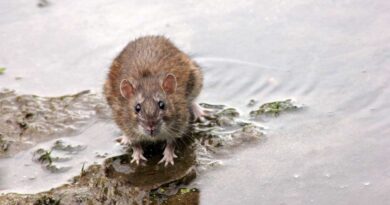The Lyme Disease
Encouraging new field research on Prevention of Lyme Disease
In a controversial move, the village of Fayetteville, NY contracted with the federal government to shoot and kill deer. The slaughter resulted in the death of 89 individuals. A primary purpose was to reduce the number of deer in an attempt to control them as hosts for the black-legged tick, which can infect people with Lyme disease. However, deer are only one species among many which are part of the tick life cycle. And the public has not been informed whether these particular deer were even inspected for ticks right after they were killed. Did these deer have ticks and, if so, how many?
A Mistaken Strategy
Yet this approach is regarded as mistaken by Dr. Felicia Keesing, an expert on Lyme disease, who is with Bard College and the Cary Institute of Ecosystem Studies in Millbrook, NY. Instead, she is part of a multi-million dollar study that focuses on mice, chipmunks and shrews, since these animals – especially the white-footed mouse – are crucial in the cycle of infection for Lyme disease. Beginning in Spring, 2017, two methods of control will be used in a large residential area of Duchess County, NY, which has a high incidence of Lyme disease. Bait boxes will be put in people’s yards. When the small mammal enters, she or he will be sprayed with a pesticide (the same active ingredient as in many flea prevention products for dogs and cats). This will kill the ticks but not the mammal. The other method is to spray a naturally-occurring fungus in areas of the yard where ticks are likely to hang out – tall vegetation, especially in shade. This is lethal to ticks but not other insects.
Other partners in this research are the federal Centers for Disease Control, the NYS Health Department and the Duchess County Health Department.
Keesing also points out that foxes and opossums are part of the solution. Foxes eat many mice and other small creatures. Opossums are voracious eaters of larval ticks. See an article with quotes from Keesing in the Syracuse POST-STANDARD at
http://www.syracuse.com/news/index.ssf/2016/05/tick_expert_killing_deer_keeping_chickens_wont_cut_lyme_disease_in_fayetteville.html
Deer Sterilization
Meantime, Assemblywoman Pamela Hunter has secured $200,000 to study and take action on the connection between Lyme disease and deer in the Town of Dewitt and the eastside of Syracuse. The money will be filtered through the NYS Department of Environmental Conservation and the State University of New York College of Environmental Science and Forestry. As stated, this is probably the wrong focus if the main concern is Lyme disease, but apparently the wheels have been put in motion so those of us opposed to deer slaughter are trying to convince decisions-makers that the deer herd should be reduced by deer sterilization rather than death. Permanent and temporary sterilization of deer has been used in NYS and elsewhere. The most promising seems to be removal of the doe’s ovaries.
Preventing Lyme Disease through personal responsibility
A very important part of preventing Lyme disease is for each of us to take responsibility to take measures for self-protection. Here are some suggestions made by those who study the problem:
1. When outdoors in areas where ticks are more likely to be prevalent, tuck your long pants into your socks and your long-sleeved shirt into your pants. Areas of particular concern are high vegetation and even leaf litter. Tick nymphs are active in leaf litter in woods during Summer. (Spring 2016 POLYPODIUM, newsletter of the Council of Park Friends).
2. If you are outdoors in an area known for ticks consider using a skin pesticide.
3. When returning home, examine yourself carefully for ticks and take a shower.
4. Buy a simple, inexpensive device called a “Tick Twister,” which can remove ticks from people and companion animals. If you don’t have one, you can use a tweezer. Use the tweezer to grasp the buried head. Rotate 1/4 and gently but firmly remove the entire tick, especially the head. Some advise putting the tick in a jar of alcohol or kerosene rather than smashing the tick because smashing may release eggs that could hatch.
5. For your pets there are products that kill the ticks or maintain your pet free of ticks. If you go outside with your pet, search him when coming back home. It is important to mentioned that there are few vaccination available for your dog to prevent Lyme disease.
How to advocate for a fair and workable solution
If you agree that there are better ways to deal with Lyme disease than killing deer, here are government officials you can contact about your opinion. You can learn who your representatives are and how to contact them by phoning the Board of Elections. In Onondaga County, the number is (315)435-8683. You can also try www.ongov.net and then click on the button for the Board of Elections.
Who to contact? Some or all of these officials:
your member of the Common Council if you live in Syracuse;
your member of the county legislature;
the county executive, Joanie Mahoney;
your Assemblyperson and State Senator;
Gov. Andrew Cuomo
Ask them to contact the Cary Institute and consider the advice provided there. Go to www.caryinstitute.org/discover-ecology/lyme-disease
Ask them to support bills in the state legislature which would expand public education about Lyme disease. Two good bills are in the Assembly and Senate. Ask Gov. Cuomo to sign these if they reach his desk.
Ask that funds be secured for your county health department to expand public education about Lyme disease, such as TV and radio public announcements, social media, and flyers mailed to every home.
Ask that any campaign to reduce the deer herd be through sterilization.
For more information, contact People for Animal Rights, P.O. Box 15358, Syracuse, NY 13215-0358, LDESTEFANO3@twcny.rr.com, (315)488-PURR (7877) between 8 a.m. and 10 p.m., www.peopleforanimalrightsofcny.org

